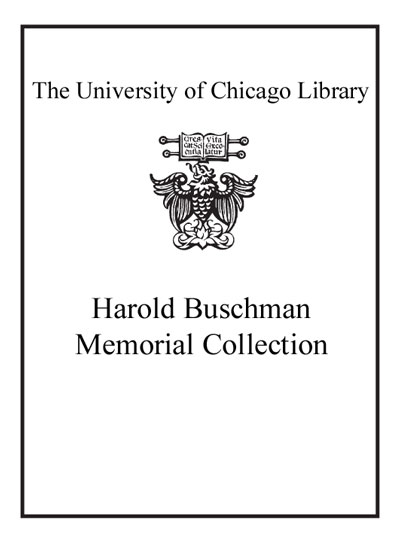Sociology, religion and grace : a quest for the Renaissance /
Saved in:
| Author / Creator: | Szakolczai, Árpád. |
|---|---|
| Imprint: | London ; New York : Routledge, 2007. |
| Description: | xvii, 396 p. ; 25 cm. |
| Language: | English |
| Series: | Routledge advances in sociology ; 25 |
| Subject: | |
| Format: | Print Book |
| URL for this record: | http://pi.lib.uchicago.edu/1001/cat/bib/6230656 |
Table of Contents:
- Preface
- Acknowledgements
- Introduction: Grace and gift-giving beyond charisma
- The paradox of grace
- The meanings of grace
- Approaching a typology grace through rites of passage
- A typology grace through the logic of gift-giving
- From universal generality to singular particularity
- Outline/chapter structure
- Part 1. The births and re-births of grace in Antiquity
- Introduction to part 1: the Minoan and Judaic roots of Europe
- Coincidence and conjecture
- Henri Frankfort on Hebrew transcendence against nature
- Henrietta Groenewegen-Frankfort on Minoan grace of nature
- 1. Minoan Grace
- Kerenyi on the Minoan Dionysos
- Themes in Minoan art
- The sudden emergence of Minoan civilisation
- An attempt at interpretation: a religion of womanhood?
- A Minoan Trickster?
- Concluding remarks
- 2. Grace in Greece
- Greek myths
- The Cretan origins of Greek mythology
- Grace in Athens
- Athens's golden age
- Themistocles
- Pericles
- Socrates: graceful speech without beauty
- 3. The Three Graces
- The Graces in mythology
- The Three Graces in art
- The Graces and the Furies; or the counter-spiral
- Conclusion to part 1
- Part 2. The experiential bases of Tuscan Renaissance painting
- Introduction to part 2: what is the Renaissance? Franciscan renewal vs. revival of Pagan Antiquity
- 4. The Tuscan Renaissance
- Lucca
- Pisa
- Siena
- Florence
- 5. The Tuscan 'maniera greca' and its experiential bases
- What is the 'maniera greca'?
- 1204-5: the epochal experiential knot
- The San Matteo Crucifix
- The early Franciscan movement: the stigmas and the Joachimite wing
- Giunta Pisano: the emotivism of a suffering and dying god
- 6. Cimabue and the Bonaventuran origins of Renaissance painting
- St Bonaventure: a Franciscan revival
- The cult of Mary
- Ugolino di Tedice: towards the new Tuscan Madonna
- Cimabue: the early years
- Cimabue in Rome
- Cimabue in Florence
- Cimabue in Assisi
- Cimabue: the last work
- Concluding remarks
- Conclusion to part 2
- Part 3. The flowering and demise of Renaissance Grace
- Introduction to part 3: Grace, Calumny and the return of the Trickster, or Alberti's advice and admonition
- 7. Leonardo da Vinci: the early years
- Introduction
- Leonardo's early years
- c. 1466: the move to Florence
- In Verrocchio's workshop
- Verrocchio's early life and first commissions
- The Golden Years and further promise
- Verrocchio as painter
- Leonardo's early paintings
- The break between Leonardo and Verrocchio
- 8. Leonardo da Vinci: the mature works
- The mystery years: 1476-8
- Back in Florence: 1478-82
- 1482-3: the move to Milan
- Leonardo's theology
- 1500-1: the return to Florence
- The last pointing finger: the Baptist/Bacchus
- 9. Michelangelo
- Early activities
- The 'demonic' according to Enrico Castelli
- Twisted male nudes in battle scenes
- The Pollaiuolos, or the return of the Trickster
- Michelangelo's stony Madonnas
- David, or the apotheosis of revolt
- The 'titanic' according to Karoly Kerenyi
- Michelangelo's tombs
- The Sistine Chapel vault
- Teaching the world
- The Last Judgment
- The dead Christ as the model for life
- Michelangelo's personality: ethical terror as another face of the Trickster
- 10. Raphael
- Early years
- 1504: the move to Florence
- Raphael's dilemma
- The second answer: the Leonardo Madonnas
- The practice of portraits
- Late 1506: the trauma of Leonardo's departure and the first encounter with Michelangelo
- 1508: the call to Rome
- Visions of Madonnas
- 1513-14: the new encounter with Leonardo
- The last works, 1518-20
- Conclusion to part 3
- Conclusion: retrieving connections
- Notes
- References
- Name index
- Subject index

